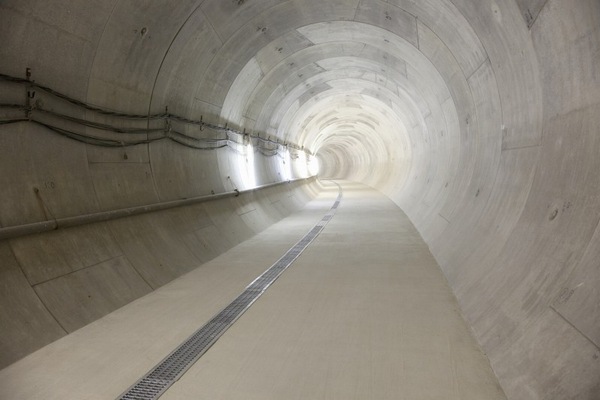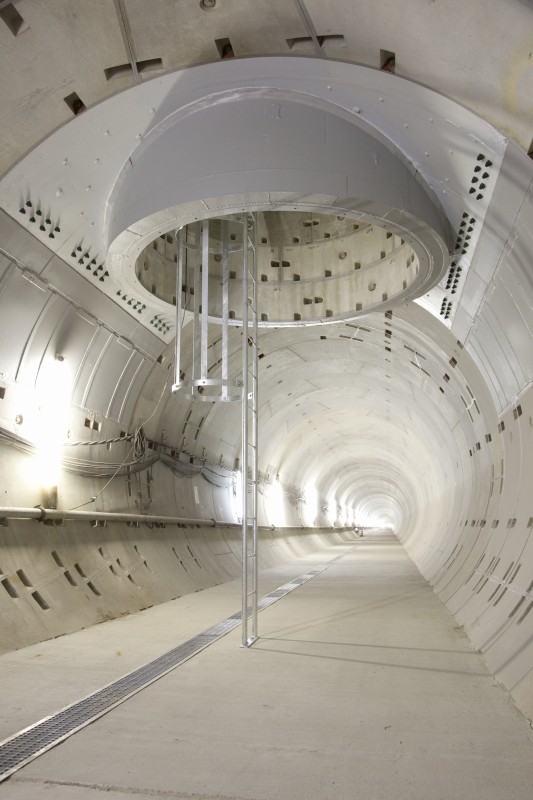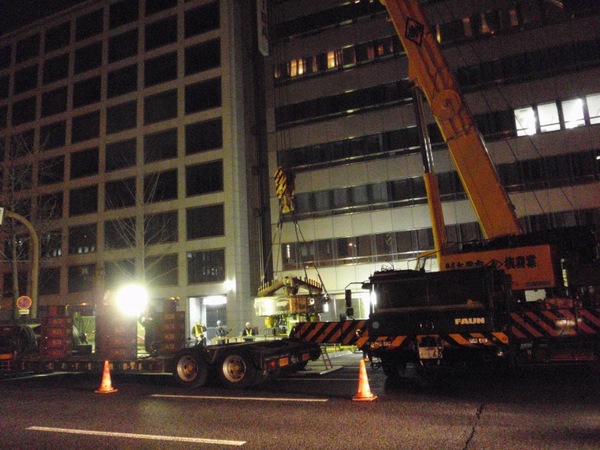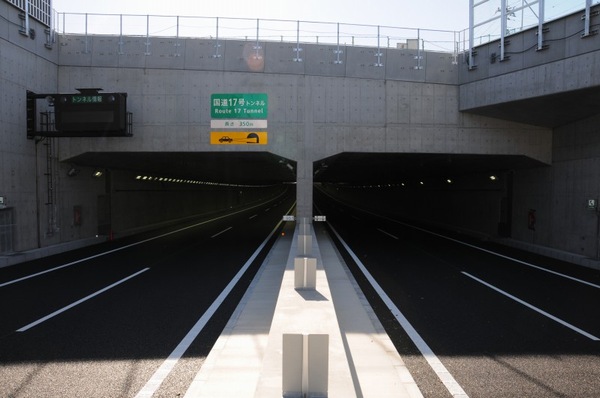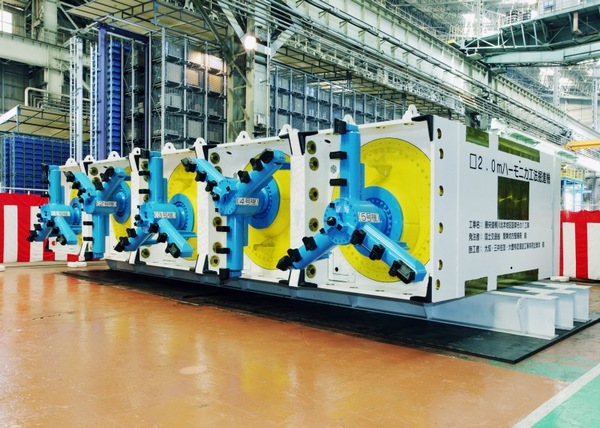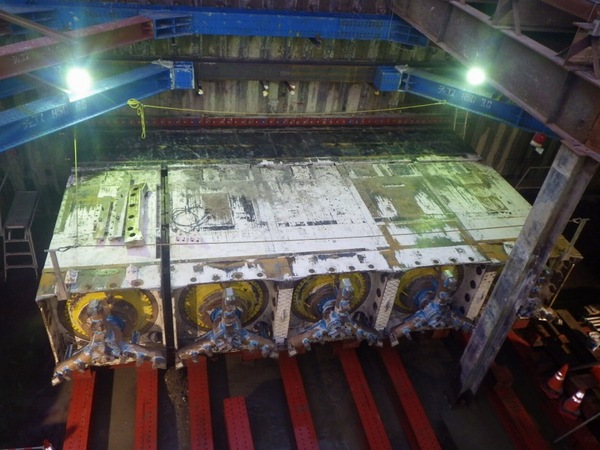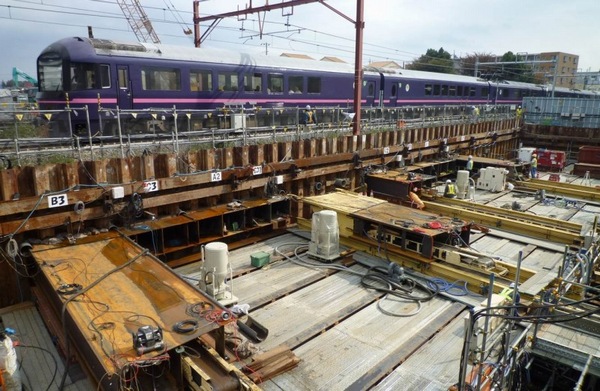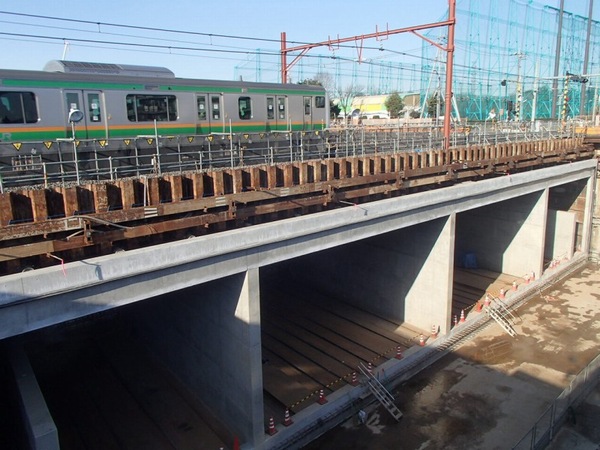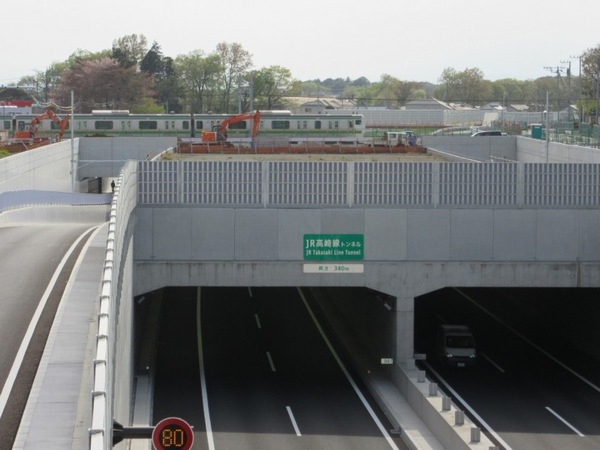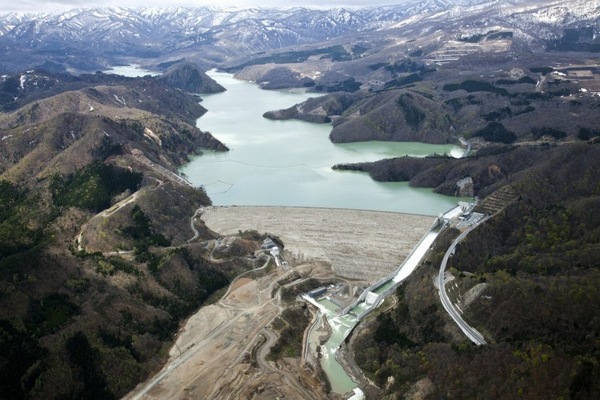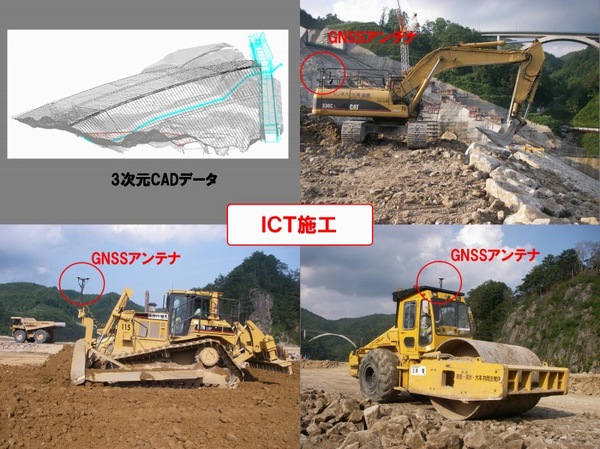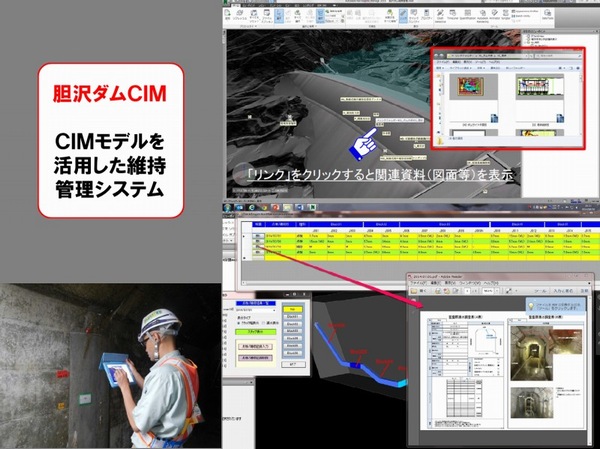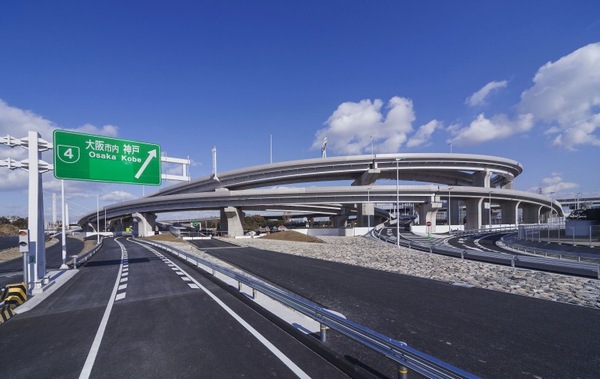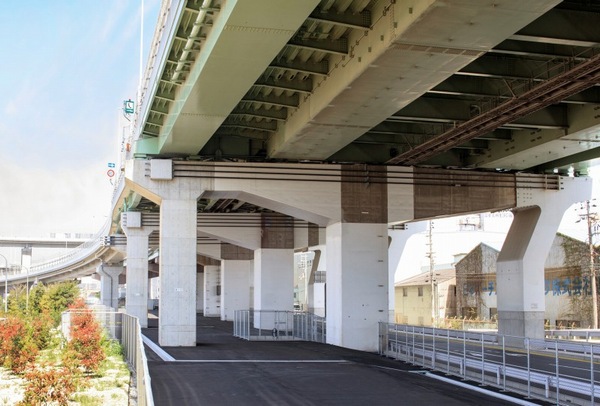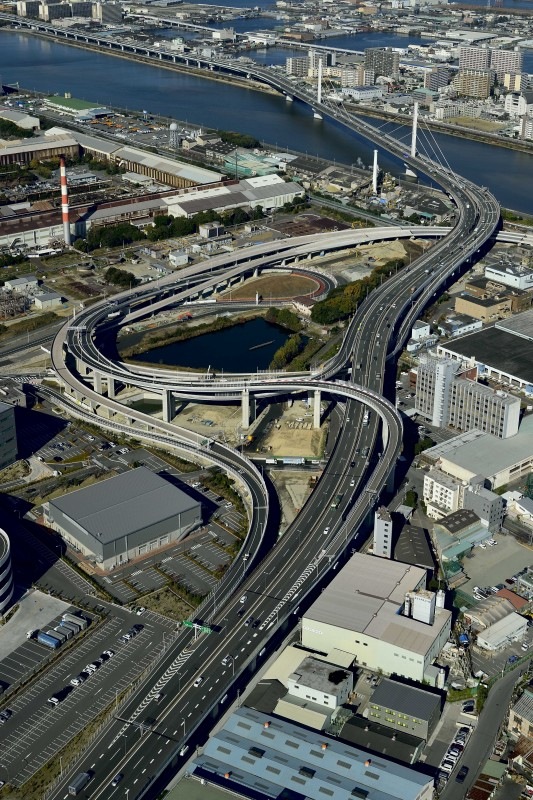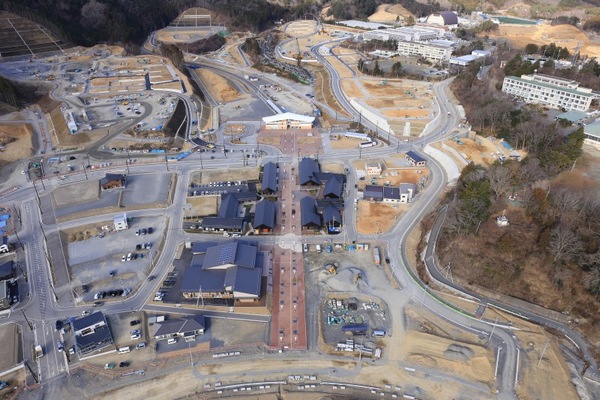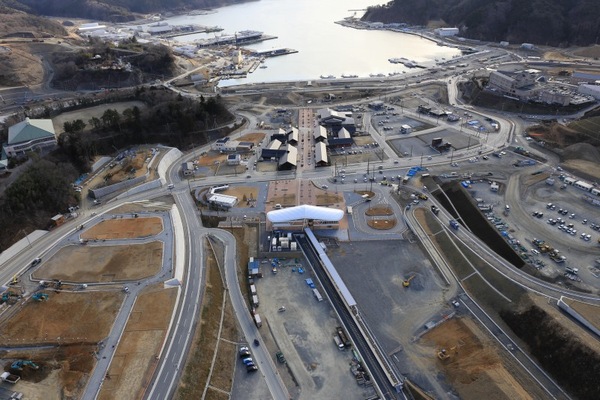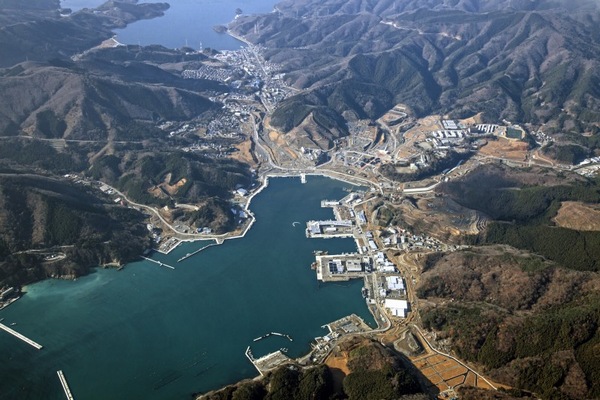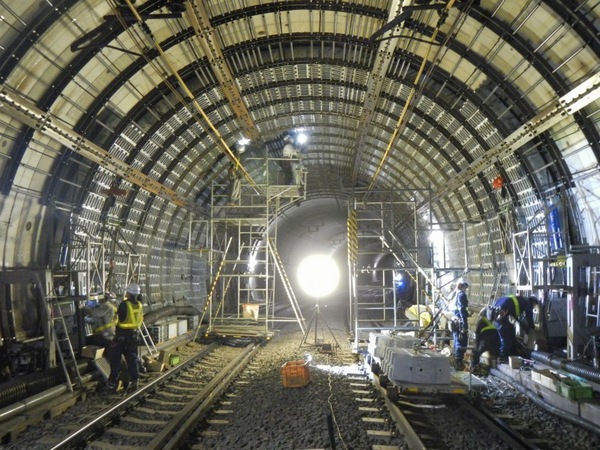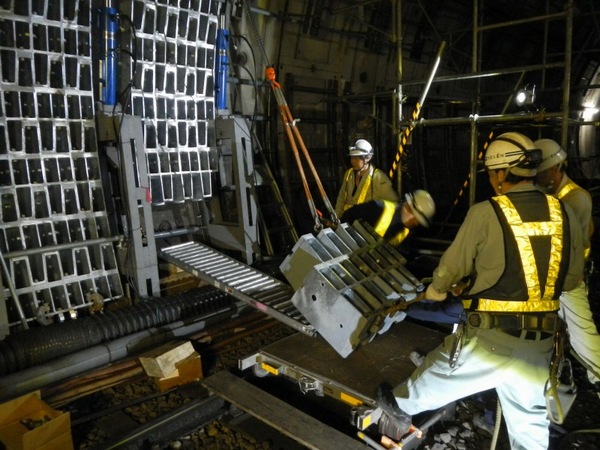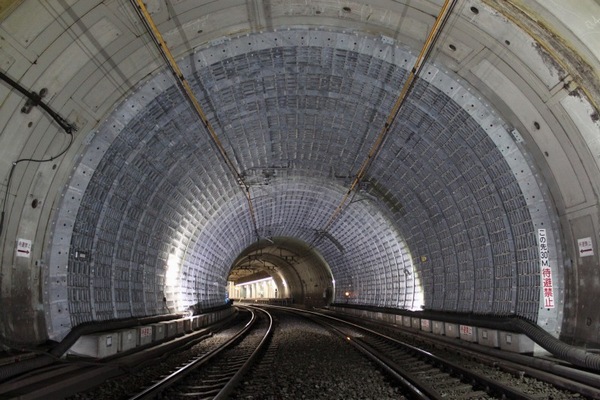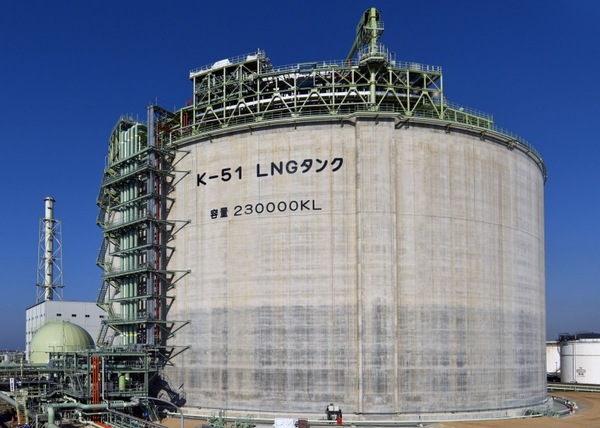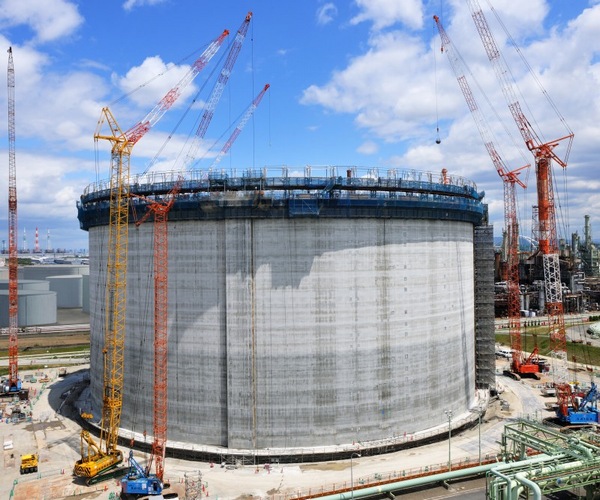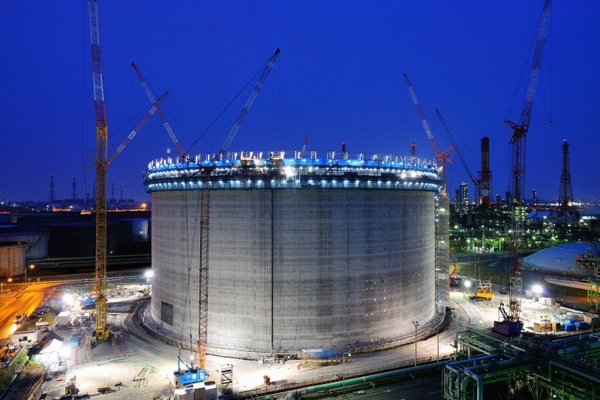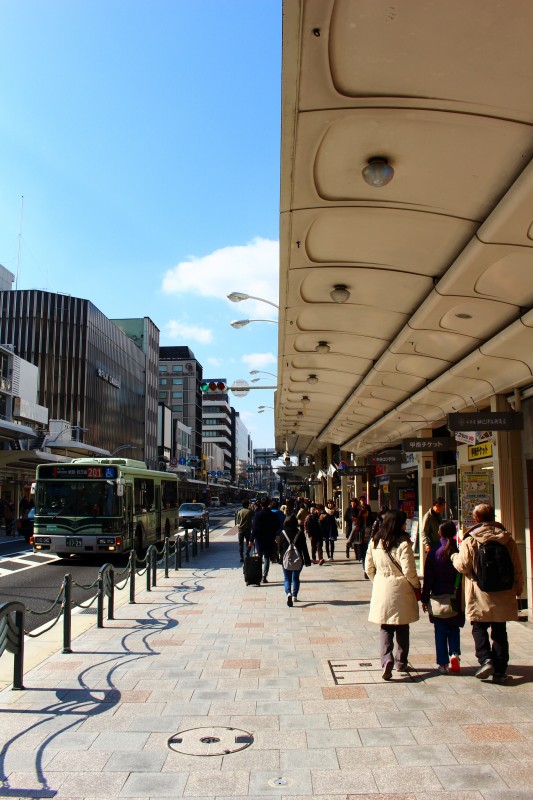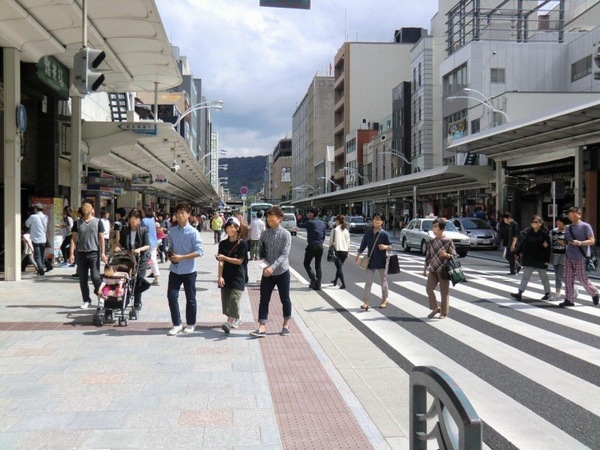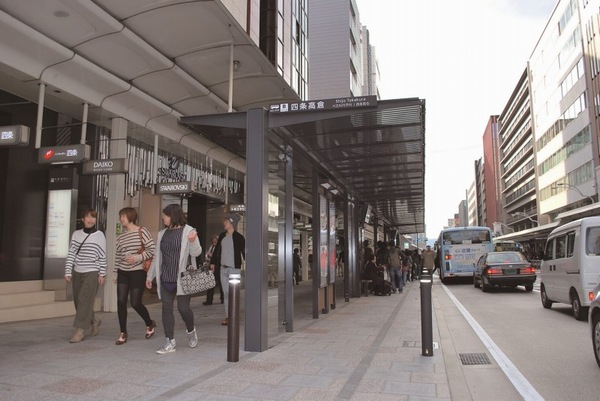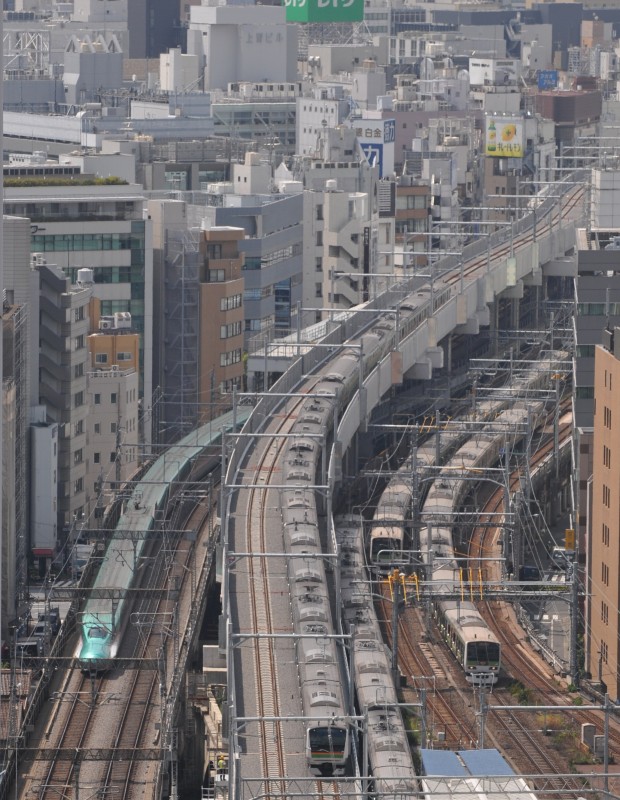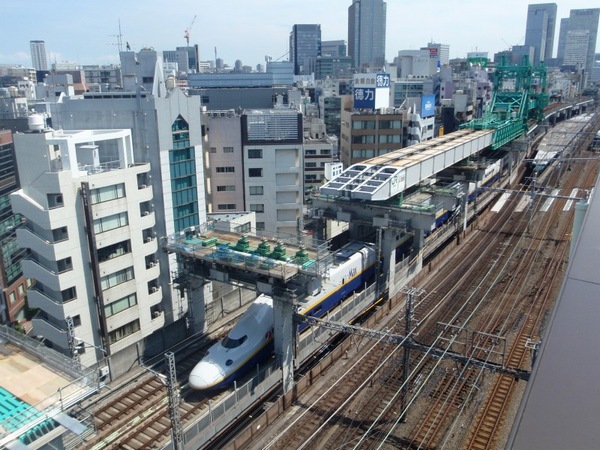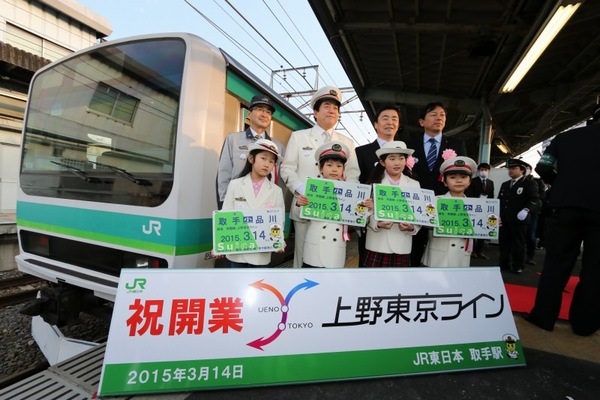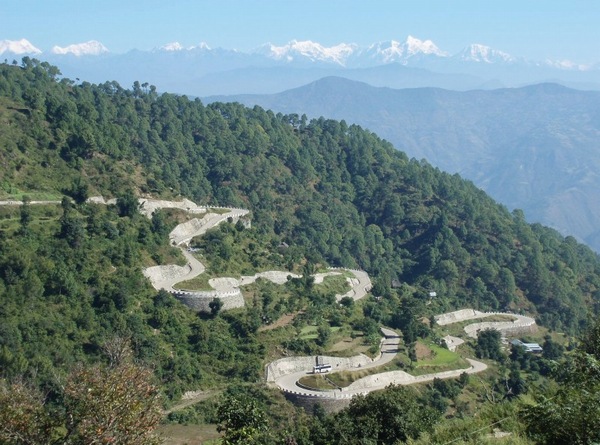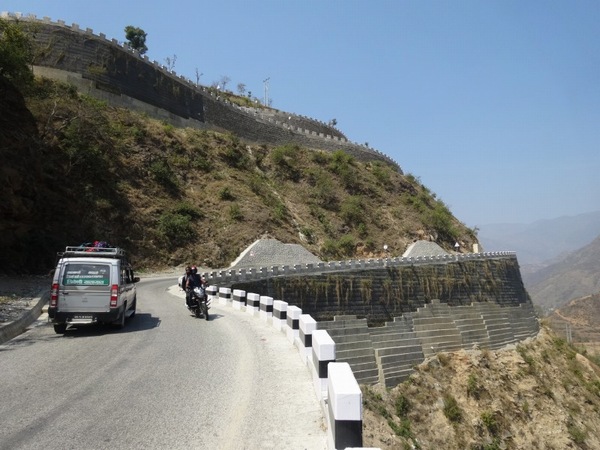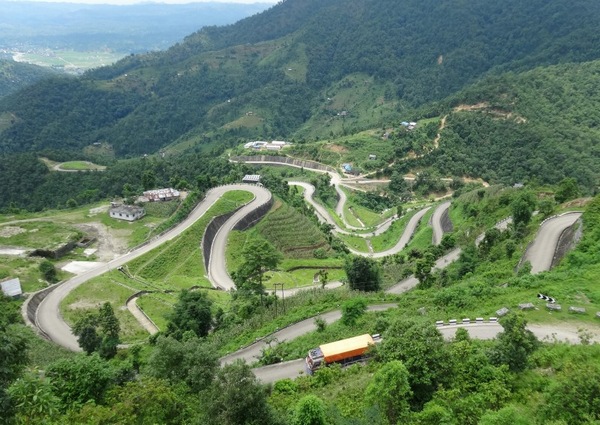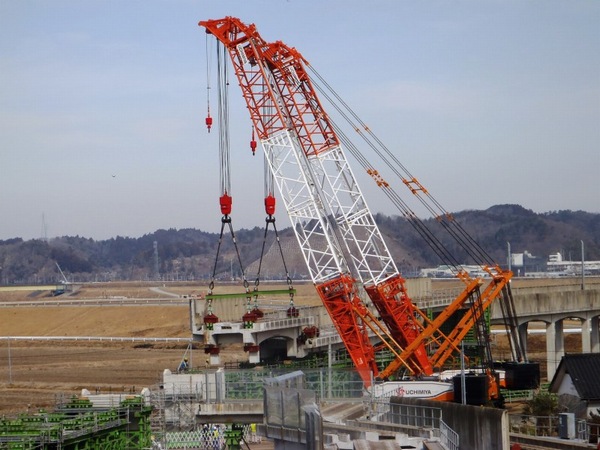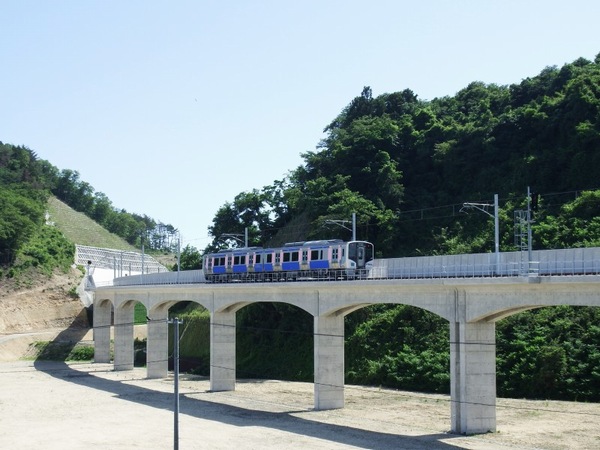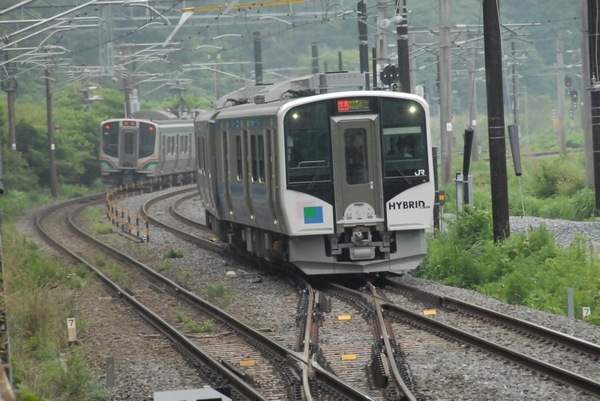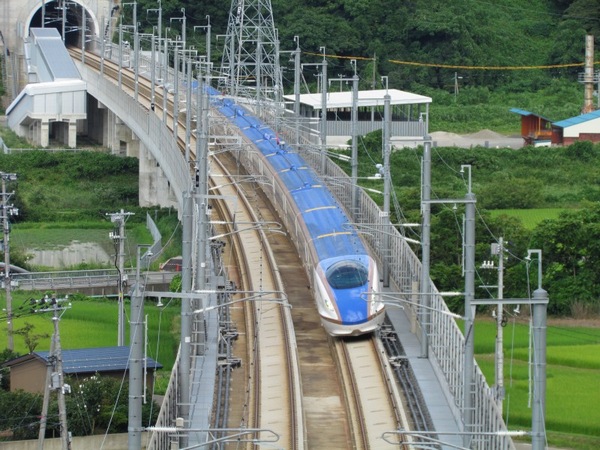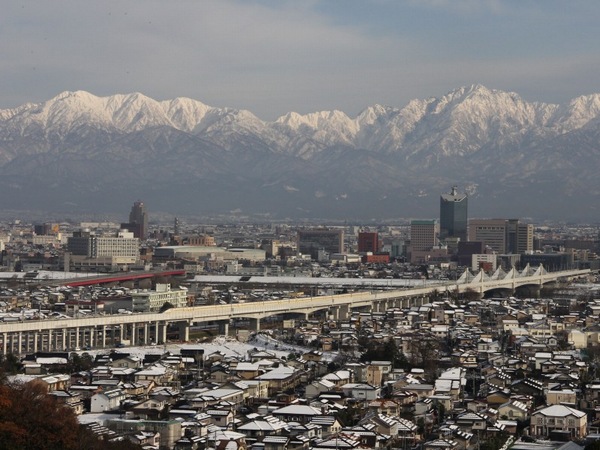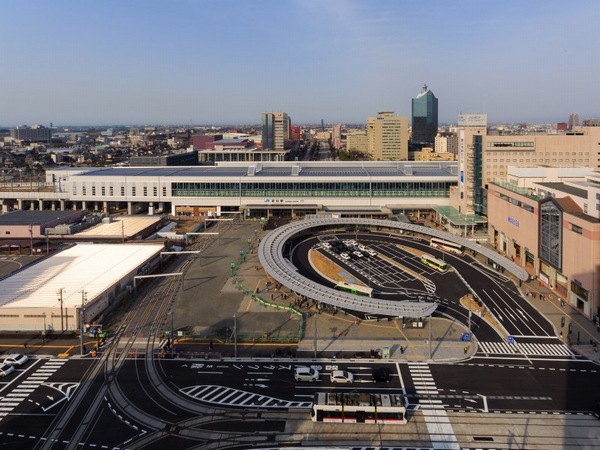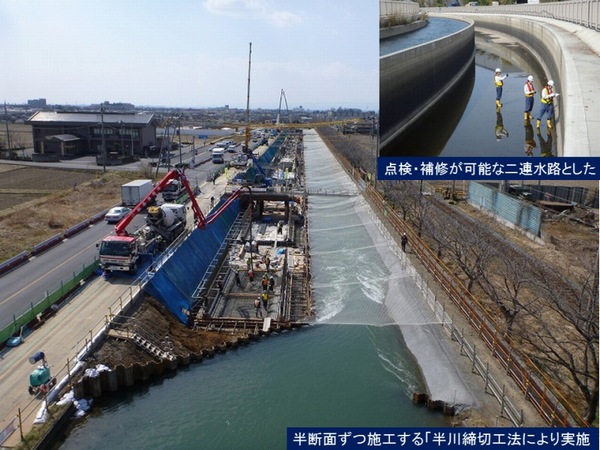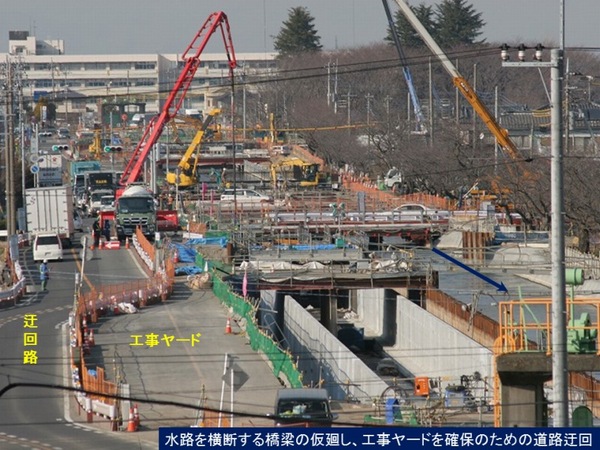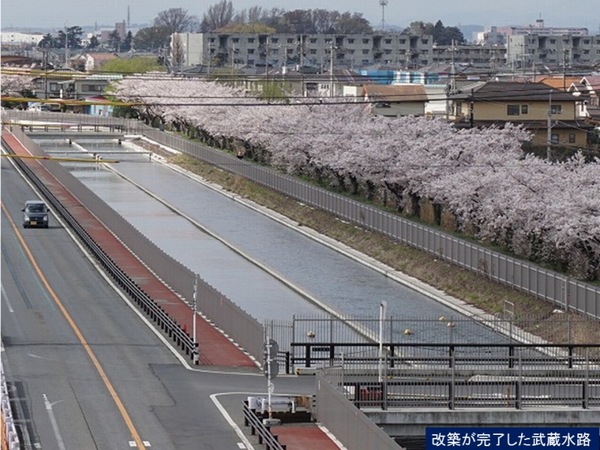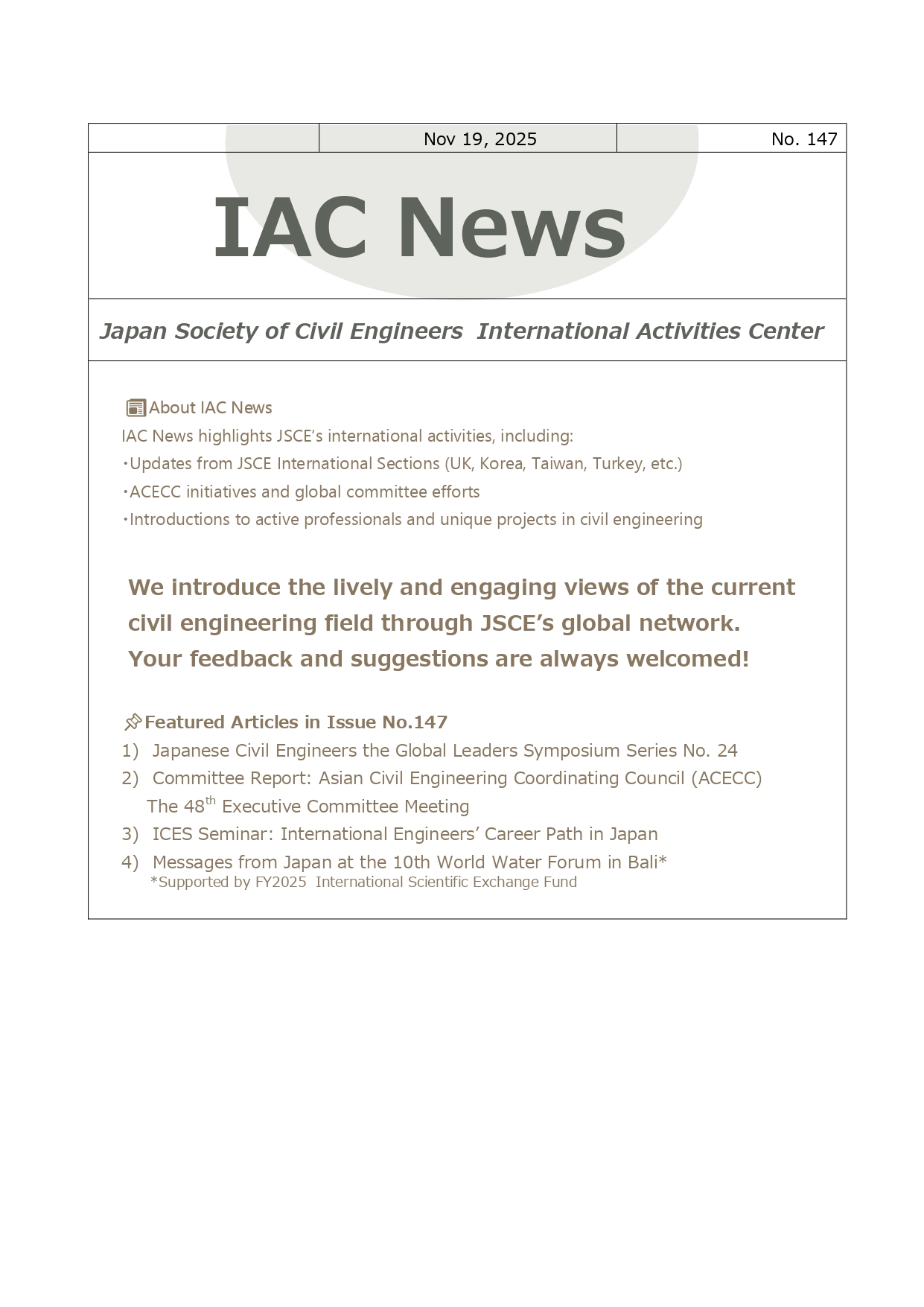2015 Outstanding Civil Engineering Achievement Award
[Group-1]
1. Midosuji Utility Tunnel Construction Project
- Ministry of Land, Infrastructure, Transport and Tourism, Kinki Regional Development Bureau,Osaka National Highway Office
- Joint Venture of Taisei Corp. & Penta-ocean Co.,Ltd.
Midosuji utility tunnel is a main common utility corridor under the symbolic road of Osaka, Midosuji.
The design adopted the Upward Shield Method, which is advantageous at deep underground, for tunneling the vertical branching shaft. This enabled keeping the main utility horizontal tunnel deep within the stable diluvia formation with safe distance away from existing underground structures. Furthermore, using RSF Segment that relies on the excellent properties and crack-reducing effects of steel fibers resulted in an earthquake-resistant, durable and rational design.
In term of constructability, the Upward Shield Method significantly reduced surface occupation and thus impact on traffic and natural environment. For the horizontal utility tunnel, using the technology of Double Bits where the cutter bits are replaced automatically, allowed long distance uninterrupted tunneling.
In this way, the results of this project contribute to the development of future infrastructure and advancement of civil engineering technology.
2. Project Report of a Vehicular Box culvert Construction for the Metropolitan Inter-City Expressway at Okegawa Kitamoto Area
Subtitle: Harmonica multi-type tunneling method introduced into construction of underpass tunnel
- Oomiya national highway office, Kanto Regional Development Bureau, Ministry of Land, Infrastructure, Transport and Tourism
- Taisei Corp., Mitsui Sumitomo Corp., Daiho Corp. Joint Venture
This project was to construct 42.5m length underpass box culvert under existing national highway having 50,000 car traffic a day. The special construction method called “Harmonica multi-type tunneling” not to need an open cut excavation was introduced into construction of this underpass box culvert for the first time in the world.
This method firstly constructs the frame of box culvert using small square shield machine 2m by 2m, and by connecting 3 to 5 numbers of it in horizontally or vertically. This is a quite new and efficient method which does not require any diversion and complicated traffic control of existing road during construction.
This innovation is established as new technology to enable the efficient construction of large scale box culvert without open cut excavation in the urban area, and expected to be used widely in future for similar type of box culvert.
3. New non-open cut technique used in underpass construction with a reduced ground displacement risk during train operation hours (FUTATSUYA underpass ~ Ken-O Expressway below the JR Takasaki line Ground Cutting JES(Joint Element Structure) Method)
- Ministry of Land, Infrastructure, Transport and Tourism Oomiya National Highway Office
- Saitama Pref. Kitamoto Land Development Office
- East Japan Railway Company Joshin-etsu Construction Office
- Tekken Corp. Kan-Etsu Branch; Kajima Corp. Kanto Branch
- Sato Kogyo Co.Ltd. Tokyo Branch
- JR East Consultants Company Joshin-etsu Branch
Futatsuya underpass is the underpass box culvert structure constructed as a part of the construction of a loop expressway(Ken-O Expressway) and prefecture road below the JR Takasaki line located in Saitama Prefecture.
A new non-open cut technique, “the Ground-Cutting JES Method” was developed to reduce the ground displacement risk and shorten the construction period maintaining safe train operation.
With a small overburden under tracks without suspending train operation, this method contributed to the early completion. This method is innovative technology accomplished considerably shortening a construction period ensuring the safety train service, and applicable to construction of underpasses of railway tracks.
4. The pioneer project of applying the Construction Information Modeling in Dam construction and management-Isawa Dam Construction Project
- Tohoku Regional Bureau, Ministry of Land, Infrastructure, Transport and Tourism
- Kajima Corporation-Shimizu Corporation-Ohmoto Gumi Co., Ltd Joint Venture
Isawa Dam is a Rockfill dam located in Oshu City, Iwate Prefecture, Japan.
At the construction stage, Isawa Dam was applied ICT Construction Management System based on 3D-Dam-CAD Systems since 2005, when the concept of Construction Information Modeling (CIM) was not typical works, and completed embankment.
The management technology using the first CIM At the operation and maintenance stage in Japan, leaded CIM the whole management through each phase of Feasibility study, Design, Construction and Maintenance, and achieved efficiency, the optimization of the maintenance. And this Achievement became base on the next stage of construction technology.
These above technologies of CIM contribute to the whole civil engineering works not only dam construction.
5. Sambo Junction Construction, Hanshin Expressway Yamatogawa Route: Junction Construction Involving Reconstruction of Existing Structures in Coastal Urban Areas Where Liquefaction Is a Concern
- HANSHIN EXPRESSWAY Co., Ltd.
- KAJIMA Corp.
- YOKOGAWA BRIDGE Co., Ltd.
The Sambo Junction project in Sakai City, Osaka, combines novel technological developments and improvements to existing technologies in order to address concerns such as liquefaction during an earthquake and a narrow construction site. The Sambo junction is a new interchange linking the Hanshin Expressway Route 4 Wangan Route to Yamatogawa Route currently under construction.
The completed junction will not only be a compact, joint-less structure utilizing existing bridge piers but will also include localized ground improvements for a more compact foundation and feature room for passing disaster response vehicles while adopting liquefaction countermeasures. The junction will also serve as a model for future projects with similar constraints.
6. Construction Management for Disaster Recovery (CMDR) to Support Rebuilding of Great East Japan Earthquake-Stricken Onagawa Town
- Urban Renaissance Agency
- The Reconstruction and Community Development Project
- Kajima・Ohba Joint Venture
- Onagawa Town
In order to facilitate the early restoration of disaster area, which suffered immense damage by Great East Japan Earthquake, the new project execution system utilizing construction management at-risk as a base (hereinafter referred to as “Construction Management for Disaster Recovery (CMDR)”) and practical tool to manage CMDR to implement the project in cooperation with Onagawa municipal government, Urban Renaissance Agency, and construction-related companies has been established.
Application of this system enabled to drastically shorten the construction schedule and managed to open New Onagawa Town earlier than scheduled date. Moreover, the construction cost has been efficiently reduced and collaboration with local companies effectively contributed to rehabilitation of local economy.
7. Permanent Reinforcement against Deformation of Railway Shield Tunnel with ground subsidence -Takashima Tunnel Reinforcement Work-
- Yokohama Minatomirai Railway Co.
- Nippon Civic Consulting Engineers Co.,Ltd.
- Shimizu Corp., Tokyu Construction Co.,Ltd. JV
The reinforcement works were carried out from the internal and external points in order to ensure permanent safety of the deformed tunnel. The external reinforcement was executed as ground improvement of the surrounding ground since the deformation was caused by ground subsidence. The internal one was implemented as a secondary lining which was particularly developed for the reinforcement of the tunnel in a largely deformed section.
The biggest challenges of the internal reinforcement work are safety management of temporary works and building works of newly developed segment linings to secure schedule and quality. This construction method is highly evaluated in to tunnel rehabilitation works.
8. Construction of World’s Largest LNG Storage Tank Adopting Slipform Method -Senboku LNG Terminal I, Osaka Gas-
- Osaka Gas Co., Ltd.
- Obayashi Corp.
The construction of the world’s largest LNG above-ground storage tank (230,000m3) was successfully completed at Senboku LNG Receiving Terminal I, Osaka Gas Co., Ltd. It is a full containment tank encased by a pre-stressed concrete outer tank and replaces the existing tank after 42 years in operation.
The stability of the existing tank foundation was demonstrated by an in-situ lateral loading test on the existing group piles. In addition, the durability of the existing foundation was verified by inspecting for deterioration of the steel piles and concrete. These positive findings, in respect of stability and durability of the existing foundations, allowed us to validate the current design basis for this type of structure.
A remarkable achievement was accomplished by the establishment of the “slipform” method applied to the new outer tank construction, which significantly reduced the construction period to only 20 days from an anticipated 9-month period, if a conventional method of construction had been adopted.
[Group-2]
1. Shijo Street Sidewalk Expansion Project: giving priority to pedestrians and public transportation in city development to make walking more enjoyable
- Kyoto City
Before construction along Shijo Street, there were two lanes where stopping vehicles forced others to cross the centerline. Buses were blocked, not able to stop at bus-stops properly, and passengers were walking into the street to reach buses. Per hour the number of people in vehicles traveling the 15m wide street was 2,200, and the number of pedestrians using the 3.5m sidewalk was 7,000.
The project reduced lanes, established jetty-terrace-style bus-stops, spaces were created for stopping vehicles, and the sidewalk expanded for all to walk safely. This innovative project leads the nation in giving priority to pedestrians and public transportation.
2. Construction of Ueno-Tokyo line, that dramatically improved the service of the railway transportation in Tokyo metropolitan area -Reconstruction of the railway network realized by renovating a number of facilities in an urban central area-
- East Japan Railway Company
Ueno-Tokyo(UT) line is the project of a new line in a most crowded section between Ueno and Tokyo. The project realized seamless operation between the lines that had ended in Ueno or Tokyo and reduced the congestion. We managed to conduct a number of constructions: building a new structure above Tohoku-Shinkansen, customizing track layouts in Shinagawa station and depot for the operation, and renovation of passenger facilities in Tokyo and Shimbashi station to accommodate increasing passengers.
UT line relieved the congestion, rid transfer, and shortened traveling time. Consequently, it increased user benefits all over the metropolitan area. In addition, it activated the exchange among areas along the lines and contributed to the development of Japanese society.
3. The Project for Construction of Sindhuli Road Completion of the mountain road with its total length of 160km and 1,300m difference of altitude over thirty years in Nepal
- Japan International Cooperation Agency
- Department of Roads, Ministry of Physical Infrastructure and Transport, Nepal
- Nippon Koei Co., Ltd.
- Hazama-Taisei Joint Venture
- Hazama Ando Corp.
This construction project with its total length of 160km and 1,300m difference of altitude connects from Kathmandu capital city to Terai Plain with the way to the border of India. The site consists of rocks with vulnerable steep slopes on fragile geology. Several disasters occurred during the implementation. These difficulties has been overcome by harmonization between Japanese and local technology.
Completion of this project contributes poverty reduction and improvement of the livelihood of local people, and achievement of national development plan of Nepal aiming to economic growth as well as stability and safety of Kathmandu capital city.
4. Restoring the JR Senseki Line and Connecting the Senseki and the Tohoku Lines in the recovery phase from the Great East Japan Earthquake
- East Japan Railway Company
- Miyagi Prefectural Government
- Sendai city government
- Ishinomaki City Government
- Higashimatsushima City Government
- Urban Renaissance Agency
The JR Senseki Line was decided to be rebuilt off the coast according with the urban planning by the Higashimatsushima city government.
For further contribution to the recovery from the earthquake, East Japan Railway Company planned and built the Senseki-Tohoku Line which shortened the time required between Ishinomaki and Sendai. In parallel with the operation recommencement of the JR Senseki Line, the Senseki- Tohoku Line began operation.
By utilizing state-of-art railway construction technology, the railway operation resumed earlier than expected. The work has contributed to the further development of the local communities and railway construction technology.
5. Completion of Hokuriku Shinkansen (from Nagano to Kanazawa) -Mobility Innovation between Hokushinetsu region and Tokyo /Kansai metropolitan area-
- Japan Railway Construction, Transport and Technology Agency
- East Japan Railway Company
- West Japan Railway Company
Hokuriku Shinkansen (from Nagano to Kanazawa, Approx. 228km) was opened on March 14, 2015. The high speed mobility of Hokuriku Shinkansen leads to increase the number of passengers to approximately three times, compared with the conventional trains from the previous year. This is most successful case of Shinkansen development project in recent decades.
In order to construct Hokuriku Shinkansen, various railway construction technologies have been advanced. For example: Iiyama tunnel was adopted the multiple-layer tunnel support method for squeezing ground with volatile gas; Himekawa bridge was the first pre-stressed concrete finback girder bridge for Shinkansen, and so on.
Seven new stations of Hokuriku Shinkansen were developed as a symbol of each region along with regional developments.
6. Rebirth of Musashi Canal -Rehabilitation Works for Prolonging Life of the Facility Without Stopping Water Supply to Tokyo Metropolitan Area as the Water Aorta-
- Japan Water Agency
50 years has passed after the completion of Musashi CanalProject, approximately 30% of water conveyance ability had declined due to the land subsidence and decrepit of the canal. In addition, serious issues such as lack of seismic-proof and increase of the flood damage risk due to the urbanization in the region were realized.
Therefore, rehabilitation project has launched to recover the function of water conveyance ability. Also, functions of seismic proof and inner basin drainage were added through the rehabilitation project.
However, we could not stop domestic water supply to Tokyo metropolitan area, 20m3/s water conveyance was secured during rehabilitation period by introducing various civil engineering methods. Thus, the rehabilitation works were carried out under various restrictions to be overcome.
Rehabilitated Musashi canal has increased the safety level of flood control in the region and upgraded the original function with the sustainable function of the multi-purpose canal.

